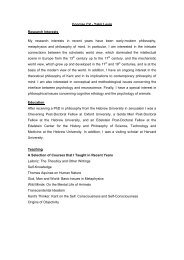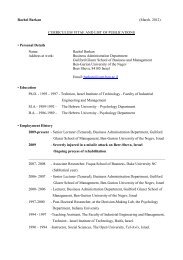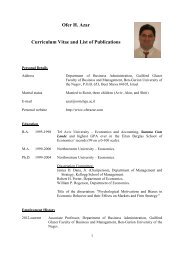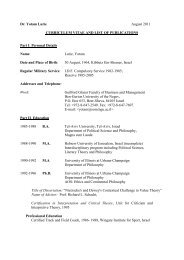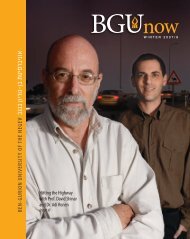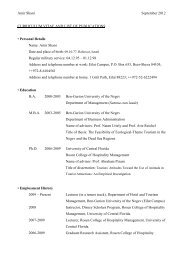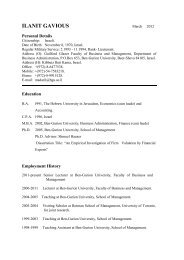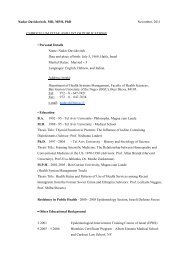Book of Abstracts
Book of Abstracts
Book of Abstracts
Create successful ePaper yourself
Turn your PDF publications into a flip-book with our unique Google optimized e-Paper software.
8<br />
New technique for measuring surface energy balance and soil water evaporation beneath sparse plant<br />
canopies .................................................................................................................................................. 30<br />
Sustainable agriculture in water-stressed, arid regions using aeroponics ............................................... 30<br />
Modelling the water balance in low rainfall cereal systems <strong>of</strong> Southern Australia ................................ 30<br />
DESERT ARCHITECTURE .................................................................................................................................... 31<br />
Practical research supporting climatic and sustainable design in Zin School ........................................ 31<br />
Architecture and city planning in dry areas: A case study <strong>of</strong> the Pink city <strong>of</strong> India .............................. 32<br />
The services <strong>of</strong> cultural heritage in drylands: An approach from water traditional technologies as a<br />
territory heritage system <strong>of</strong> desert .......................................................................................................... 32<br />
Recognizing morphological patterns in built environments ................................................................... 33<br />
Exploring barriers to providing resilience to buildings through design ................................................. 33<br />
DESERTIFICATION AS CATASTROPHIC REGIME SHIFT: EMPIRICAL AND MATHEMATICAL<br />
ASPECTS ................................................................................................................................................................... 34<br />
Desertification as a gradual regime shift in spatially extended ecosystems ........................................... 34<br />
Critical transitions due to interactions between climate and vegetation in drylands .............................. 35<br />
Pattern dynamic in self-organized semi-arid vegetations: field and remote-sensing evidences ............. 35<br />
The dynamics <strong>of</strong> vegetation patterns under slowly varying conditions .................................................. 35<br />
Desertification vulnerability in Morocco ................................................................................................ 36<br />
ECOSYSTEM SERVICES ....................................................................................................................................... 36<br />
Drylands conundrums: kangaroos versus sheep for conservation <strong>of</strong> Australia’s rangelands ................. 36<br />
Overview <strong>of</strong> Jordan biodiversity and ecosystem services ...................................................................... 37<br />
Spiders in Desert Agro-Ecosystems ....................................................................................................... 38<br />
An Ecosystem Service Inventory: Lessons from the Northern Negev long-term social ecological<br />
research (LTSER) platform .................................................................................................................... 38<br />
Trans-border perceptions <strong>of</strong> ecosystem services in the desert: A social inquiry in the Southern Arava<br />
Valley on both sides <strong>of</strong> the Israeli-Jordanian border .............................................................................. 38<br />
ENVIRONMENTAL EDUCATION ........................................................................................................................ 39<br />
Waste hazard implications on health and welfare in the Negev's Bedouin Arab community- the<br />
children’s point <strong>of</strong> view .......................................................................................................................... 39<br />
Construction <strong>of</strong> new place identity in an unrecognized Bedouin village – from alienation to<br />
environmental responsibility .................................................................................................................. 40<br />
Developing a renewable energy curriculum, based on experts' and 9th grade students’ perceptions .... 40<br />
A place-based approach to enhancing 7th-9th grade students' systems thinking and understanding <strong>of</strong><br />
biodiversity ............................................................................................................................................. 41<br />
Outdoor education and ecology literacy in the desert............................................................................. 41<br />
Learning to live more lightly: Children’s understanding, attitudes and behavior in arid regions .......... 42<br />
Turning a green leaf towards sustainability ............................................................................................ 43<br />
Engineering for developing communities: A case study <strong>of</strong> education for sustainability in higher<br />
education ................................................................................................................................................. 43<br />
The schoolyard as a tool for addressing sustainable development and environmental issues in arid<br />
countries ................................................................................................................................................. 43<br />
EVOLUTION, CLIMATE AND MAN AS FACTORS LEADING TO DEGRADATION AND<br />
PRODUCTIVITY LOSS IN TERRESTRIAL BIOMES ....................................................................................... 44<br />
From evolutionary to anthropomorphic habitat degradation: a lesson from past cycles <strong>of</strong><br />
“desertification” to the present crises ..................................................................................................... 44<br />
Spatial heterogeneity and food-web complexity – the role <strong>of</strong> ecosystem engineers in dryland<br />
ecosystems .............................................................................................................................................. 45<br />
Uncertain ecosystems: the ecology <strong>of</strong> open, non-forested vegetation .................................................... 46<br />
Fragmentation and biodiversity patterns in fragmented semi-arid landscapes ....................................... 46



